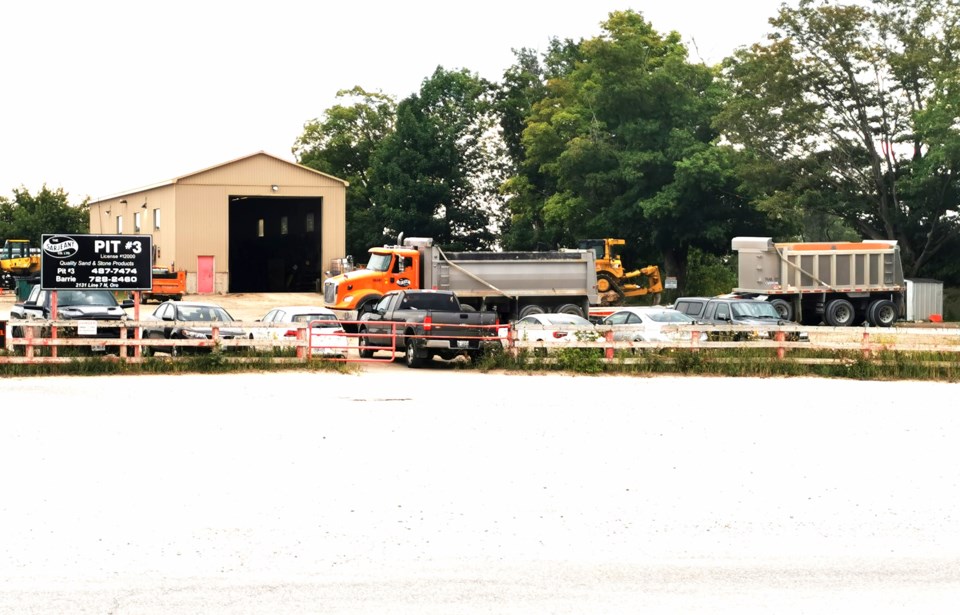A new application by an Oro-Medonte-based aggregate pit to take water has caused concerns to ripple through the community as those who oppose the application worry about the future implications.
For the past decade, the Sarjeant Company Limited has been operating an aggregate pit about five kilometres north of the Oro-Medonte Fairgrounds.
During that time, the company says, it had never received a complaint from any of its neighbours – or anybody else – about the amount of water it used for its operations.
That changed when Sarjeant made a recent application to the Ministry of the Environment, Conservation and Parks for a ‘permit to take water.’
Gary Machan, an Oro-Medonte resident who is affiliated with the Simcoe County Greenbelt Coalition, wrote his opposition in a letter to local media.
“Sargeant is asking for a permit which will take 454 litres of prime water per minute, 24 hours a day which equates to a volume of 654,624 litres per day, 200 days a year for 10 years,” he wrote.
While Machan is correct that those are the numbers included on Sarjeants’ application, Mike MacMillan, Sarjeants’ assistant general manager, urges folks to exercise a bit of caution when reviewing the application.
“One cannot get a realistic approximation of actual water taking by multiplying the theoretical maximum water-taking by the theoretical maximum days in the application,” MacMillan said. “In reality, our water pump usually only runs about three times per week, only during working hours, and doesn't run at all in the winter or periods when we are not washing.”
According to MacMillan, the Ministry of Environment form and process calculate theoretical maximums and puts the onus on Sarjeants’ hydrogeology consultant to prove that this theoretical taking can be supported at any given time. It is not intended to be used as a projection of actual water taking.
The ‘permit to take water’ that Sarjeant’s is applying for will be used for industrial-aggregate washing purposes.
MacMillan said washing sand – called desilting – is essential in producing sand with the correct specification for use in concrete.
Washing, he explained, removes fine sand particles that would otherwise increase the amount of cement required in concrete. Removing silt from concrete sand reduces its surface area and in turn reduces the demand for cement, which has the dual benefit of drastically reducing the cost of producing concrete while also substantially reducing the carbon dioxide produced in concrete manufacturing.
“All water is recycled perpetually in a closed loop system of lined settling ponds,” MacMillan explained. “The only water that leaves the system leaves through evaporation, or as moisture in the silt or washed sand. Our well is only used to periodically 'top-up' our recirculating ponds.”
Still, a local environmental expert has concerns.
Bob Bowles, founder and coordinator of the Ontario Master Naturalist certificate program offered at Lakehead University in Orillia, says the Sarjeant permit request could impact three major local watersheds in the Oro moraine including parts of Lake Simcoe and Georgian Bay.
“They (Sarjeant) can gloss it over by saying the water is being put back,” said Bowles. “But they’re still altering the discharge. There should be no aggregate operations on the moraine at all – ever.”
Bowles said his biggest concern is the impact industrial-aggregate washing, and all other development, is having on the region’s aquifer. He says there hasn’t been any scientific research done on the current state of the aquifer and there is no known data that can support any ‘for’ or ‘against’ position for development of any kind.
“The Oro moraine is not for our taking,” Bowles said. “There should be no industry and no housing anywhere on the moraine. Any, and all, development will alter the waterflow.
“The moraine has to be protected.”
The public can weigh in during a 30-day commenting period that ends Sept. 2. Click here to provide comment.
--With files from Tyler Evans



